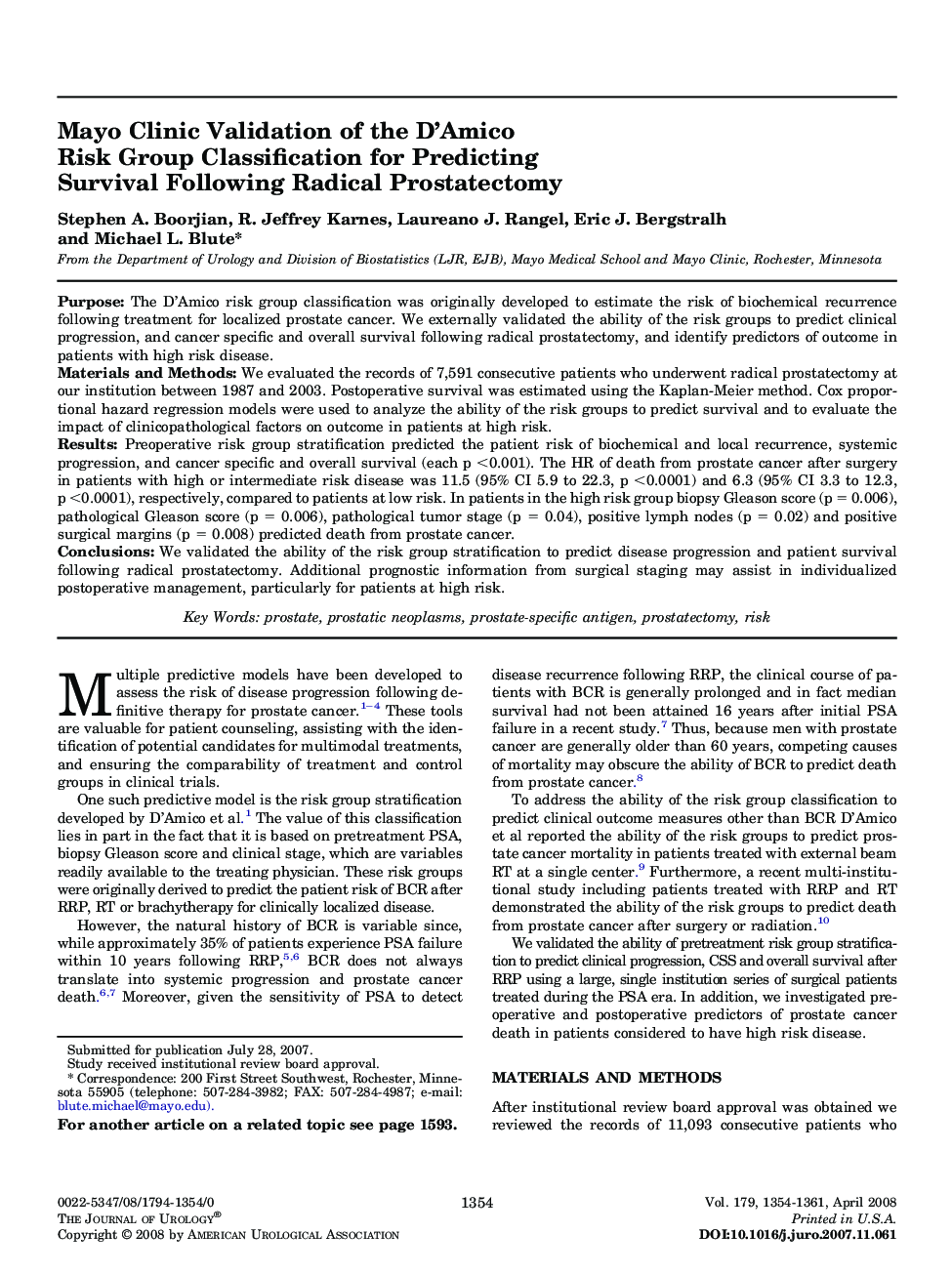| کد مقاله | کد نشریه | سال انتشار | مقاله انگلیسی | نسخه تمام متن |
|---|---|---|---|---|
| 3878244 | 1598995 | 2008 | 8 صفحه PDF | دانلود رایگان |

PurposeThe D’Amico risk group classification was originally developed to estimate the risk of biochemical recurrence following treatment for localized prostate cancer. We externally validated the ability of the risk groups to predict clinical progression, and cancer specific and overall survival following radical prostatectomy, and identify predictors of outcome in patients with high risk disease.Materials and MethodsWe evaluated the records of 7,591 consecutive patients who underwent radical prostatectomy at our institution between 1987 and 2003. Postoperative survival was estimated using the Kaplan-Meier method. Cox proportional hazard regression models were used to analyze the ability of the risk groups to predict survival and to evaluate the impact of clinicopathological factors on outcome in patients at high risk.ResultsPreoperative risk group stratification predicted the patient risk of biochemical and local recurrence, systemic progression, and cancer specific and overall survival (each p <0.001). The HR of death from prostate cancer after surgery in patients with high or intermediate risk disease was 11.5 (95% CI 5.9 to 22.3, p <0.0001) and 6.3 (95% CI 3.3 to 12.3, p <0.0001), respectively, compared to patients at low risk. In patients in the high risk group biopsy Gleason score (p = 0.006), pathological Gleason score (p = 0.006), pathological tumor stage (p = 0.04), positive lymph nodes (p = 0.02) and positive surgical margins (p = 0.008) predicted death from prostate cancer.ConclusionsWe validated the ability of the risk group stratification to predict disease progression and patient survival following radical prostatectomy. Additional prognostic information from surgical staging may assist in individualized postoperative management, particularly for patients at high risk.
Journal: The Journal of Urology - Volume 179, Issue 4, April 2008, Pages 1354–1361